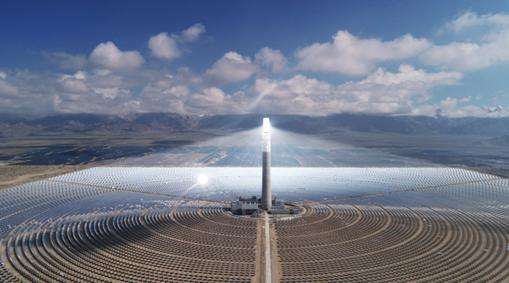Industrial electricity is calculated based on the price of 1 yuan/kWh of electricity. A monthly electricity bill of 100,000 yuan = 100,000 kWh of electricity.
Photovoltaic power generation can generate 4 kWh of electricity on average. electricity per kilowatt per day throughout the year.
According to this calculation, the total installed capacity required is approximately 25 MW.
1 MW of installed capacity occupies approximately 10,000 square meters of roof area
25 MW requires 250,000 square meters of roof area
The electricity bill is 33,000 kWh. how far can it be traveled by a purely electric car?
Here is the electricity bill for two months, NT$94,200. If we do not take into account the variation in electricity prices in Taiwan province, based on an average of NT$2.85 per kilowatt hour, this is equivalent to 33,000 kilowatt hours. of electricity. I don't know if it's about plantinggrass or exploit. What is the concept of a family using 33,000 kWh of electricity in two months? Let's put it on a mainstream pure electric car and see how far it can go.
First, let's talk about Tesla. The high-performance Model 3 all-wheel drive version has a battery energy of 78.4 kWh and a CLTC cruising range of 675 km. With 33,000 kilowatt hours of electricity, it can recharge its battery from 0% to 100% 421 times. Therefore, the total cruising range reaches 284,200 kilometers, and the circumference of the earth's equator is about 40,000 kilometers. In other words, two months' electricity bill from a certain star can allow Model 3 to circle the Earth's equator 7 times.
The performance-oriented Model S doesn't have this long range. It is equipped with a 100 kWh battery and has a CLTC range of 672 kilometers. Total autonomy that can be achievedte with 33,000 kWh of electricity is approximately 221,800 kilometers.
Looking at the performance of the best-selling Wuling MINIEV, some media once said that the power consumption of MINIEV is one of the lowest among electric vehicles. So let's take the example of the hard-to-find convertible version. The battery energy is 26.5 kWh and the CLTC cruising range is 280 km. 33,000 kilowatt hours of electricity can charge it about 1,245 times, and the total range reaches 348,600 kilometers. If MINIEV could fly, it would be just 380,000 kilometers from the Earth and the Moon before it could get to the Moon.
BYD is a leader in new energies in China. Let's take a look at his dolphins first. The high-end version has a battery energy of 44.9 kWh and a CLTC cruising range of 405 km. Using the same calculation method, 33,000 kilowatt hours of electricity can probablyallow a dolphin to travel 297,700 kilometers. The high-end version of the Seal, with an 82.5 kWh battery, a CLTC cruising range of 650 km and 33,000 kilowatt hours of electricity, can travel 260,000 kilometers and circle the Earth 6.5 times.
Looking at Qin PLUS EV again, let's take the Didi Shengui travel version. The battery energy is 47.5 kWh and the NEDC cruising range is 400 kilometers. 33,000 kilowatt hours of electricity can recharge Qin PLUS 695 times, so it can travel a total of 277,900 kilometers. Calculating according to a relatively good situation, driving Didi can earn about 80 cents per kilometer, so the 33,000 kilowatt hours of electricity can earn Didi drivers 220,000 yuan, who can pay a deposit in their hometown. However, on base of 8 hours of slow charging, Didi drivers still have to wait 5,560 hours for charging, i.e.approximately 231 days.
Let's look at the current #1 battery range for pure electric vehicles, the Aion LX Plus, which has a maximum NEDC range of 1,008 kilometers and is equipped with a battery of one energy of 144.4 kWh. So, with 33,000 kilowatt hours of electricity, it can be recharged 229 times and the total range is 230,400 kilometers. In comparison, the battery life of the AION LX Plus is much lower than previous models, which also means that power consumption is relatively high. After all, this is a mid-size SUV.
They are both mid-size SUVs, let's see if the new model is better. The NIO ES6 long-range version has a NEDC range of 610 kilometers and battery energy of 100 kWh. Therefore, 33,000 kilowatt hours of electricity ÷ battery energy of 100 kilowatt hours x single full-charge cruising range of 610 kilometers, the resulttat is 201,300 kilometers, which is a bit obvious. After the same calculation, the 702 km Xpeng G9 range of medium and large SUVs has a total range of 236,400 kilometers.
If placed on Xiaoyadi, the battery life of 72V38Ah, or 2.74 kilowatt hours, can reach 240 kilometers. Calculated like this, 33,000 kilowatt hours of electricity are enough for me to recharge 12,044 times, travel 2.89 million kilometers and make 4 round trips to the moon! But before that, the car was probably charged and exploded.














